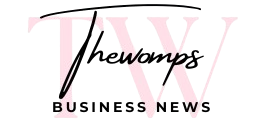
In today’s fast-paced and ever-changing business environment, staying ahead of the competition is crucial. One way to ensure your business remains competitive is by utilizing demand prediction tools. These tools analyze historical data, market trends, and other variables to forecast future demand for your products or services. In this article, we will explore the benefits of using demand prediction tools and provide a comprehensive guide for businesses looking to implement them.
What are Demand Prediction Tools?
Demand prediction tools are software applications that use advanced algorithms and machine learning techniques to forecast customer demand. By analyzing data such as sales history, market trends, economic indicators, and even weather patterns, these tools can provide businesses with valuable insights into future demand for their products or services. This allows companies to better plan their production, inventory management, and marketing strategies, ultimately leading to improved efficiency and profitability.
Why Use Demand Prediction Tools?
Predicting demand accurately is essential for businesses of all sizes. By using demand prediction tools, companies can:
- Anticipate customer needs: By forecasting demand, businesses can ensure they have enough inventory on hand to meet customer demand, reducing stockouts and lost sales opportunities.
- Optimize pricing strategies: Demand prediction tools can help businesses set prices that maximize revenue and profitability based on anticipated demand levels.
- Improve resource allocation: By accurately forecasting demand, companies can allocate resources more efficiently, reducing waste and overhead costs.
How to Choose the Right Demand Prediction Tool?
When selecting a demand prediction tool for your business, consider the following factors:
- Data accuracy: Ensure the tool can analyze and interpret data accurately to provide reliable demand forecasts.
- Scalability: Choose a tool that can scale with your business as it grows and can handle large volumes of data.
- Ease of use: Look for a user-friendly interface and intuitive design that makes it easy for team members to use the tool effectively.
- Integration capabilities: Select a tool that can integrate with your existing systems, such as CRM software, ERP systems, and e-commerce platforms.
Implementing Demand Prediction Tools in Your Business
To successfully implement demand prediction tools in your business, follow these steps:
- Identify your objectives: Clearly define your goals and objectives for implementing demand prediction tools, such as reducing inventory costs or improving customer satisfaction.
- Gather relevant data: Collect historical sales data, market trends, and other variables that can be used to train the demand prediction tool.
- Select the right tool: Choose a demand prediction tool that aligns with your business needs and objectives.
- Train your team: Provide training and support to your team members on how to use the tool effectively and interpret the demand forecasts.
- Monitor and adjust: Continuously monitor the accuracy of the demand forecasts and make adjustments as needed to improve the tool’s performance.
Conclusion
Demand prediction tools can be a valuable asset for businesses looking to stay ahead of the competition and better serve their customers. By accurately forecasting demand, companies can improve efficiency, reduce costs, and maximize profitability. When selecting a demand prediction tool for your business, consider factors such as data accuracy, scalability, ease of use, and integration capabilities. By following the steps outlined in this guide, you can successfully implement demand prediction tools in your business and gain a competitive edge in the market.
Learn how demand prediction tools can benefit your business and how to choose the right tool with this comprehensive guide.
